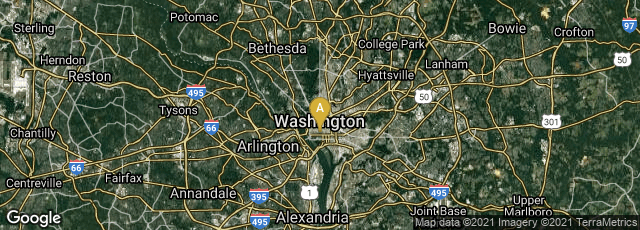

A: Washington, District of Columbia, United States
On April 1, 1880 American inventor Alexander Graham Bell and his then-assistant Charles Summer Tainter transmitted the first wireless telephone message on a beam of light for 213 meters between the roof of the Franklin School and the window of Bell's Washington, D.C. laboratory using the photophone.
"The photophone used crystalline selenium cells at the focal point of its parabolic receiver. This material's electrical resistance varies inversely with the illumination falling upon it, i.e., its resistance is higher when it is in the dark, and lower when it is exposed to light. The idea of the photophone was thus to modulate a light beam: the resulting varying illumination of the receiver would induce a corresponding varying resistance in the selenium cells, which were then used by a telephone to regenerate the sounds captured at the receiver. The modulation of the transmitted light beam was done by a mirror made to vibrate by a person's voice: the thin mirror would alternate between concave and convex forms, thus focusing or dispersing the light from the light source. The photophone functioned similarly to the telephone, except the photophone used light as a means of projecting information, while the telephone relied on a modulated electrical signal carried over a conductive wire circuit" (Wikipedia article on Photophone, accessed 03-27-2010).
Bell's and Tainter's invention, for which Bell received the master patent (U.S. Patent 235,199) in December 1880, was the forerunner of wireless telecommunications and the far-advanced forerunner of fiber-optic telecommunications.
According to Long & Groth, Bibliography of Early Optical (Audio) Communications (2005) Bell's first paper on the photophone, "Prof. A. G. Bell on Selenium and the Photophone," was first published in The Electrician No 5, 18 September 1880, 220-221 and 2 October 1880, 237. The complete paper also was published in Nature (London) Vol 22, 23 September 1880, 500 - 503. Thus the first complete publication appears to be the version published in Nature.
Bell's longer paper "On the Production and Reproduction of Sound by Light: the Photophone" was first published in American Assocation for the Advancement of Science, Proceedings, Vol 29., October 1880, 115-136. This paper was widely reprinted in other journals. "In these papers, Bell accords the credit for the first demonstrations of the transmission of speech by light to a Mr A. C. Brown of London 'in September or October 1878' "(Wikipedia article on Photophone, accessed 03-27-2010).